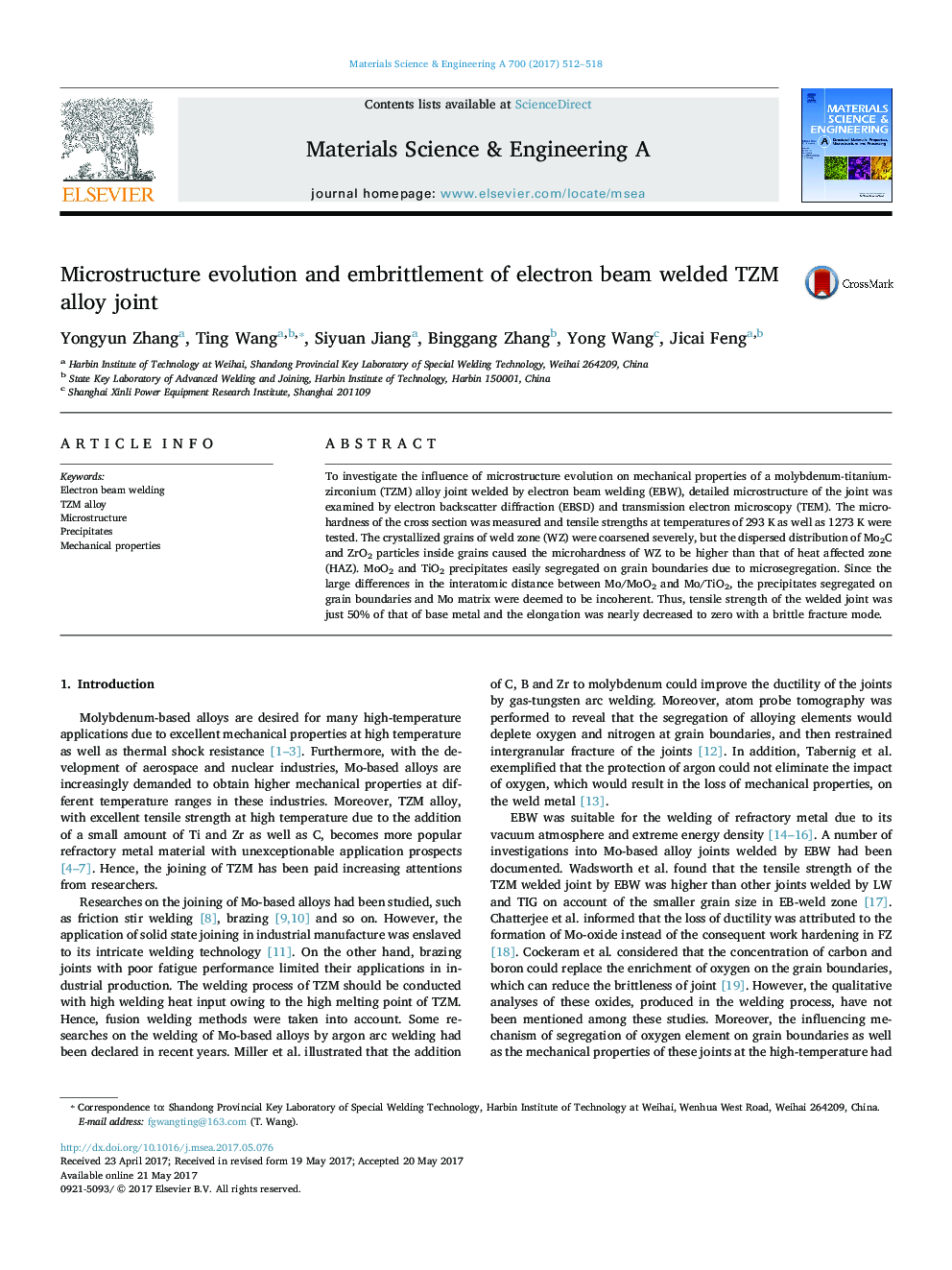| Article ID | Journal | Published Year | Pages | File Type |
|---|---|---|---|---|
| 5455473 | Materials Science and Engineering: A | 2017 | 7 Pages |
Abstract
To investigate the influence of microstructure evolution on mechanical properties of a molybdenum-titanium-zirconium (TZM) alloy joint welded by electron beam welding (EBW), detailed microstructure of the joint was examined by electron backscatter diffraction (EBSD) and transmission electron microscopy (TEM). The microhardness of the cross section was measured and tensile strengths at temperatures of 293Â K as well as 1273Â K were tested. The crystallized grains of weld zone (WZ) were coarsened severely, but the dispersed distribution of Mo2C and ZrO2 particles inside grains caused the microhardness of WZ to be higher than that of heat affected zone (HAZ). MoO2 and TiO2 precipitates easily segregated on grain boundaries due to microsegregation. Since the large differences in the interatomic distance between Mo/MoO2 and Mo/TiO2, the precipitates segregated on grain boundaries and Mo matrix were deemed to be incoherent. Thus, tensile strength of the welded joint was just 50% of that of base metal and the elongation was nearly decreased to zero with a brittle fracture mode.
Related Topics
Physical Sciences and Engineering
Materials Science
Materials Science (General)
Authors
Yongyun Zhang, Ting Wang, Siyuan Jiang, Binggang Zhang, Yong Wang, Jicai Feng,
